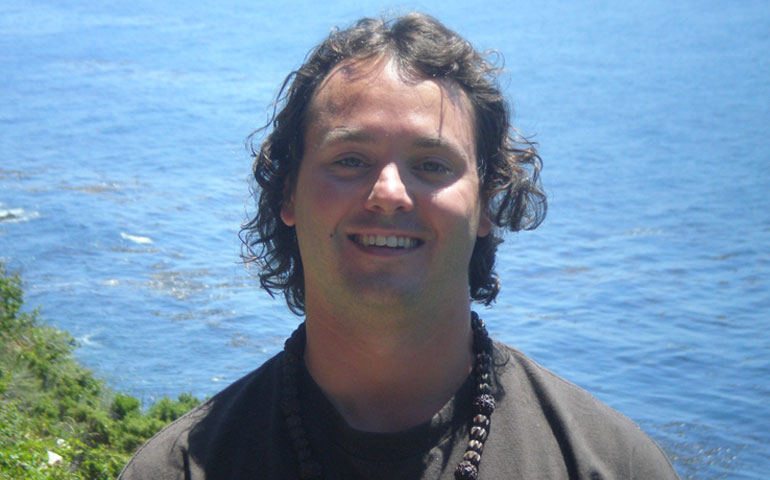
Rory McEntee
 THE NEW MONASTICISM: AN INTERSPIRITUAL MANIFESTO FOR CONTEMPLATIVE LIVING
THE NEW MONASTICISM: AN INTERSPIRITUAL MANIFESTO FOR CONTEMPLATIVE LIVING
By Rory McEntee and Adam Bucko
Published by Orbis Books
Much copy and debate has been generated by the Pew Foundation's recent snapshot of American religion. A lot of the conversation has sounded like the daily roundup of a religious stock market: who is up in terms of adherents, who is down, who held steady. But the biggest story was the exceptional rise of religious "nones" -- the nonaffiliated that predominate younger demographics.
While telling, these sorts of macro analyses do a poor job at identifying new religious trends. Aside from the broad "nones" designation, America's diverse religious landscape has long engendered new energies of renewal that transcend denominational demarcations and defy easy categorization.
One such burgeoning movement is the new monasticism and its contemplative praxis, meant to inspire personal and social transformation in the modern world. Movement leaders Rory McEntee and Adam Bucko have produced an important initial theological and philosophical framework for this coalescing spiritual impulse in The New Monasticism: An Interspiritual Manifesto for Contemplative Living.
As the authors explain, the new monasticism is monastic in that its central concern is a total commitment "to the development and maturation of one's spiritual life." But whereas traditional monks lived apart from the world behind closed doors and thick walls, new monastics are called to live out their spiritual journey and find unity with the Holy Spirit in a way that is radically incarnated in day-to-day life.
Furthermore, the new monastic's introspection unleashes a lifetime of compassionate and prophetic action, a sustained "sacred activism" that reorients the older monastic archetype toward the needs of today's complex world.
Where some may see the emergence of nones as a narrative of religious decline, Bucko and McEntee see a process of renewal. They are bold to ask, "It is it possible that the impulse driving people beyond the walls of established traditions is itself being orchestrated by the Holy Spirit?"
With the inspired writing of spiritual reformers, they contend that their work is in many ways making explicit trends they already see, particularly among younger generations who seek a spiritual pathway that is immanently and inextricably rooted in bettering the world.
Their optimism draws heavily on the writings of Jesuit theologian Pierre Teilhard de Chardin, on his evolutionary understanding of humanity and religion that sees transformation as part of a progressive, teleological process. "It is for us to remain forward-looking, trusting the evolutionary thrust of Spirit," Bucko and McEntee write.
The book itself is divided into four parts, or "movements," and is an effort to expand upon and clarify the new monastic framework that the authors first made explicit in a manifesto written in the summer of 2012. The original manifesto, which emerged out of a dialogue run by Trappist Fr. Thomas Keating at St. Benedict's Monastery in Snowmass, Colo., is reprinted in the book as Movement 1.
Movement 2 is the theological heart of the book, in which the authors draw out and unpack the central concepts of the manifesto. They delve into the new monasticism's focus on interspirituality -- its borrowing from several faith traditions despite its heavily Catholic influence, as well as central concepts like the importance of dialogue, the need for spiritual mentorship, the value of new monastic communities, and meditations on vocation.
Movement 3 is an extended reprinted dialogue between Bucko and McEntee meant to model the movement's emphasis on dialogue, and Movement 4 is a short overview of the new monastic spiritual path.
The result is a sophisticated and sweeping theological achievement. Among its many influences, the authors draw upon Keating, Ken Wilber, Ewert Cousins, Raimon Panikkar, Wayne Teasdale, St. Teresa of Avila and St. John of the Cross, while incorporating modern psychology, Orthodox sophiology, Eastern and Western monastic traditions, and Sufi mysticism.
As unorthodox as the vision and its presentation may sound, these seemingly disparate strands come together into a unified woven vision. In less inspired hands, this work could have been a spiritual hodgepodge of shallow New Age eclecticism. But the authors make clear that the new monasticism is not a spiritual buffet that one may peruse at will. It is an intensive practice that requires serious commitment and discernment.
The individual is transformed by the process, awakened to a life of "divine expressions of compassion, love, and wisdom."
The New Monasticism is best absorbed slowly, so as to not miss its powerful insights. This original spiritual praxis is particularly recommended for all those -- nones included -- seeking a rich resource that will challenge and inspire them to reach new levels of introspection, prophetic witness and compassionate activism.
[Chris Staysniak is a doctoral candidate in American religious history at Boston College.]



